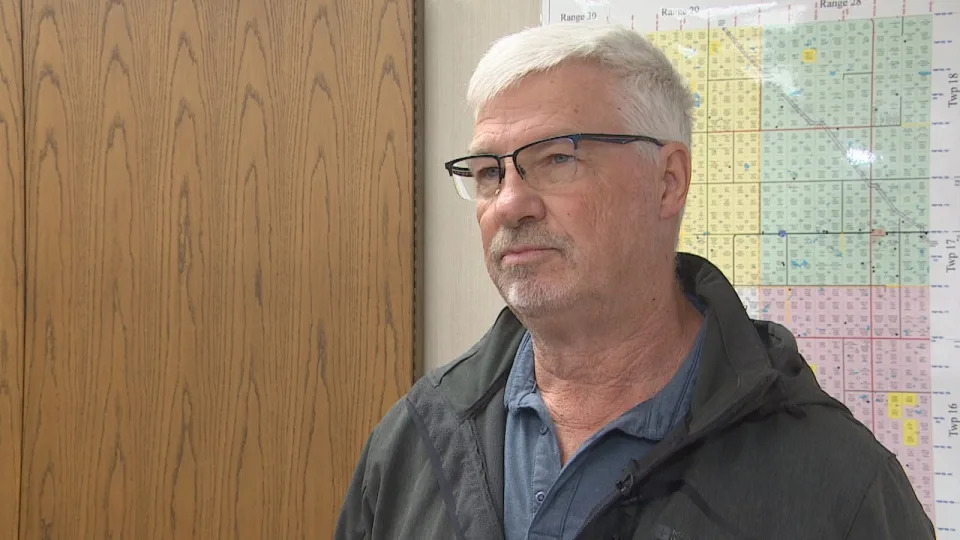Unlocking digital transformation for good: mesh conference lands in Toronto on December 6-7
By mesh conference
Published November 19, 2023

Photo courtesy the mesh conference
In a world where technology shapes the way we live and work, it’s important to harness the power of innovation to not only drive business success, but also make a positive impact on our communities. That’s the vision behind the upcoming mesh conference, set to take place in Toronto on Dec 6-7.
And this digital transformation event is more than an innovation summit — it’s an opportunity to combine innovation with social responsibility, with proceeds benefiting Second Harvest, Canada’s largest food rescue organization and leader on perishable food redistribution.
Human-powered, tech-enabled innovation
The mesh conference is back in Toronto on December 6-7 after relaunching earlier this year in Calgary where more than 200 people met to connect, share, and inspire.
And the mesh conference is not your typical digital transformation and innovation event — it’s a platform where visionaries, innovators, and thought leaders come together to explore the intersection of technology and humanity.
The theme for the Toronto event is “Human-powered, tech-enabled,” emphasizing the pivotal role of technology in augmenting human capabilities.
The two-day event will feature a series of inspiring talks, interactive workshops, and panel discussions that delve into the ways people who are augmented by technology and innovation can improve our world. Attendees will gain insights into the latest digital trends, emerging technologies, and strategies for achieving human-centered digital transformation.


Why you should attend the mesh conference in Toronto
With a focus on four threads — business, media and technology, society, and marketing — the mesh conference hosts Canadian digital transformation leaders who will meet to connect, share, and inspire others to think about changing the way we think, organize, operate and behave.
Among the many reasons innovators attend mesh:The mesh conference offers cutting-edge insights: Learn from industry experts and thought leaders about the latest digital trends and technologies shaping our world.
The mesh conference creates unique networking opportunities: Connect with like-minded individuals, build valuable relationships, and explore potential collaborations.
The mesh conference delivers social impact: Make a difference by supporting Second Harvest and helping to combat food insecurity in your community.
The mesh conference will inspire you: Discover how technology can be a force for good and get inspired to drive positive change.
The mesh conference delivers practical, hands-on knowledge: Gain actionable strategies to drive digital transformation within your organization, rooted in a human-centric approach.
Get involved — join us at the mesh conference
We invite you to be part of this unique event that combines innovation, education, and social responsibility. The mesh conference takes place at The Symes December 6-7.
To secure your spot and help support Second Harvest, visit meshconference.com and register today. Don’t miss this chance to be a part of the mesh Conference, where human-powered, tech-enabled transformation meets social impact.
See you in Toronto.
By mesh conference
Published November 19, 2023

Photo courtesy the mesh conference
In a world where technology shapes the way we live and work, it’s important to harness the power of innovation to not only drive business success, but also make a positive impact on our communities. That’s the vision behind the upcoming mesh conference, set to take place in Toronto on Dec 6-7.
And this digital transformation event is more than an innovation summit — it’s an opportunity to combine innovation with social responsibility, with proceeds benefiting Second Harvest, Canada’s largest food rescue organization and leader on perishable food redistribution.
Human-powered, tech-enabled innovation
The mesh conference is back in Toronto on December 6-7 after relaunching earlier this year in Calgary where more than 200 people met to connect, share, and inspire.
And the mesh conference is not your typical digital transformation and innovation event — it’s a platform where visionaries, innovators, and thought leaders come together to explore the intersection of technology and humanity.
The theme for the Toronto event is “Human-powered, tech-enabled,” emphasizing the pivotal role of technology in augmenting human capabilities.
The two-day event will feature a series of inspiring talks, interactive workshops, and panel discussions that delve into the ways people who are augmented by technology and innovation can improve our world. Attendees will gain insights into the latest digital trends, emerging technologies, and strategies for achieving human-centered digital transformation.

Lori Nikkel is CEO of Second Harvest. – Photo courtesy Second Harvest
Making a difference — why mesh is supporting Second Harvest
We’re in a crisis, and more people than ever are relying on food banks.
In Toronto alone, a recent study shows one in 10 people are now relying on food banks, and more than 2.5 million visits to food banks took place between April 2022 and March 2023 — a 51% increase over the year before.
Across Canada, nearly two million Canadians accessed a food bank over the course of one month, the Food Banks Canada HungerCount 2023 report shows..
With a commitment to social responsibility and using its platform to help others, the mesh conference announced that all proceeds raised after expenses will be donated to Second Harvest. Attendees of mesh can also make a top-up donation when purchasing a ticket, and every $25 raised will provide more than 100 meals to those in need via Second Harvest.
“In the spirit of giving back, we’ve designed mesh to support those facing food insecurity and we’re thrilled to be working with Second Harvest,” says mesh conference co-founder and co-producer, Sheri Moore. “Proceeds will be donated to Second Harvest, and we’re designing our food menu with our catering team at Toben Food By Design in order to rescue the food from our event in a way that has the greatest impact for our matched charity.”
Second Harvest works with thousands of food businesses from across the supply chain, utilizing logistics and technology to reduce the amount of edible food going to waste. Its inclusive model ensures a healthy surplus of food is redirected to thousands of charities and nonprofits across the country, providing millions of Canadians experiencing food insecurity access to the nourishment they need.
“It’s important to us that we help our community in any way and every way that we can,” says Moore. “With the return of mesh in 2023 after the pandemic, we have been overwhelmed by the support from new friends and mesh alumni alike. What better way to give back than to pay it forward to use our platform to help those in need.”
In addition to food donations, Moore says mesh is also looking at ways to take a circular approach with the help of Leaff Circular Gifting, a sustainable organization that offers eco-friendly flowers, plants, gifts, gift boxes, and immersive virtual experiences. Leaff Circular Gifting’s mission involves endorsing local enterprises such as farmers, artisans, indigenous communities, and others by incorporating them into their gift-centric platform.
We’re in a crisis, and more people than ever are relying on food banks.
In Toronto alone, a recent study shows one in 10 people are now relying on food banks, and more than 2.5 million visits to food banks took place between April 2022 and March 2023 — a 51% increase over the year before.
Across Canada, nearly two million Canadians accessed a food bank over the course of one month, the Food Banks Canada HungerCount 2023 report shows..
With a commitment to social responsibility and using its platform to help others, the mesh conference announced that all proceeds raised after expenses will be donated to Second Harvest. Attendees of mesh can also make a top-up donation when purchasing a ticket, and every $25 raised will provide more than 100 meals to those in need via Second Harvest.
“In the spirit of giving back, we’ve designed mesh to support those facing food insecurity and we’re thrilled to be working with Second Harvest,” says mesh conference co-founder and co-producer, Sheri Moore. “Proceeds will be donated to Second Harvest, and we’re designing our food menu with our catering team at Toben Food By Design in order to rescue the food from our event in a way that has the greatest impact for our matched charity.”
Second Harvest works with thousands of food businesses from across the supply chain, utilizing logistics and technology to reduce the amount of edible food going to waste. Its inclusive model ensures a healthy surplus of food is redirected to thousands of charities and nonprofits across the country, providing millions of Canadians experiencing food insecurity access to the nourishment they need.
“It’s important to us that we help our community in any way and every way that we can,” says Moore. “With the return of mesh in 2023 after the pandemic, we have been overwhelmed by the support from new friends and mesh alumni alike. What better way to give back than to pay it forward to use our platform to help those in need.”
In addition to food donations, Moore says mesh is also looking at ways to take a circular approach with the help of Leaff Circular Gifting, a sustainable organization that offers eco-friendly flowers, plants, gifts, gift boxes, and immersive virtual experiences. Leaff Circular Gifting’s mission involves endorsing local enterprises such as farmers, artisans, indigenous communities, and others by incorporating them into their gift-centric platform.

Photo courtesy the mesh conference
Why you should attend the mesh conference in Toronto
With a focus on four threads — business, media and technology, society, and marketing — the mesh conference hosts Canadian digital transformation leaders who will meet to connect, share, and inspire others to think about changing the way we think, organize, operate and behave.
Among the many reasons innovators attend mesh:The mesh conference offers cutting-edge insights: Learn from industry experts and thought leaders about the latest digital trends and technologies shaping our world.
The mesh conference creates unique networking opportunities: Connect with like-minded individuals, build valuable relationships, and explore potential collaborations.
The mesh conference delivers social impact: Make a difference by supporting Second Harvest and helping to combat food insecurity in your community.
The mesh conference will inspire you: Discover how technology can be a force for good and get inspired to drive positive change.
The mesh conference delivers practical, hands-on knowledge: Gain actionable strategies to drive digital transformation within your organization, rooted in a human-centric approach.
Get involved — join us at the mesh conference
We invite you to be part of this unique event that combines innovation, education, and social responsibility. The mesh conference takes place at The Symes December 6-7.
To secure your spot and help support Second Harvest, visit meshconference.com and register today. Don’t miss this chance to be a part of the mesh Conference, where human-powered, tech-enabled transformation meets social impact.
See you in Toronto.

















